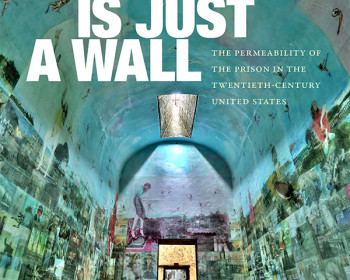Elliott Young Op/Ed: “New art exhibition raises questions about policing in Portland” in Portland Tribune
LC Professor of History Elliott Young has a new Op/Ed in The Portland Tribune entitled, “New art exhibition raises questions about policing in Portland.”
Elliott Young is professor of history at Lewis & Clark College and the author of “Forever Prisoners: How the United States Made the World’s Largest Immigrant Detention System.”
Open gallery

“Policing Justice,” an art show at PICA (Portland Institute for Contemporary Art, Feb 23 to May 19, 15 N.E. Hancock St.), asks us to think about who the police are protecting and from whom. It might seem like an unusual question for an art exhibition to pose. But it’s one worth asking in Portland, where for over 170 years, the police have disproportionately targeted people deemed undesirable by those in power, because of race (Indigenous and Black people), class (the poor, the unhoused, and labor activists), or people with mental illness.
Research by historian Charles Abbot Tracy III reveals that Portland’s early police force was directed largely at controlling Indigenous people who were being forcibly displaced from their homelands, dating back to at least 1855, when the city’s common council decided to place guards around town to defend against members of local tribes.
But historically, race wasn’t the only factor leading to over-policing in Portland. In 1913, hundreds of mounted police clubbed white women protestors who were supporting the International Workers of the World strike against the Oregon Packing Company.
By the early 1920s, Oregon was the biggest center of Ku Klux Klan (KKK) activity West of the Mississippi, and the Portland Police supported them. In 1921, the chief of police and mayor even posed for a photograph with the KKK’s Grand Dragon wearing his white robe and hood, openly celebrating their alignment.
Black Portlanders have long decried police brutality. In 1967, one young Black protestor exclaimed, “Where else but in Albina do cops hang around the streets and parks all day like plantation overseers? Just their presence antagonizes us. We feel like we are being watched all of the time.” Even the City Club acknowledged the problem, issuing a Report on Law Enforcement in Portland the following year, documenting harassment of Black residents in the Albina neighborhood.
Yet abuses have persisted, with additional groups being targeted. After several high-profile killings of people experiencing a mental health crisis, James Chasse in 2006 and Aaron Campbell in 2011, the DOJ sued Portland over unconstitutional use of force.
The resulting 2014 Settlement Agreement aimed to reduce police use of force, particularly against marginalized groups, through better training and data collection. But in 2020, just as the court was about to release the city from the agreement, the Minneapolis police murder of George Floyd sparked racial-justice protests across the country. Police violence soared in Portland, and the court found the city out of compliance.
“Policing Justice” showcases how artists have been documenting and responding to these recent and past abuses. Sandy Rodriguez “Tear Gas Map of the United States of America” and the London-based Forensic Architecture each visually document the suffocating use of chemical weapons by police during the 2020 protests, reminding us on the carcinogenic impact of a weapon that is banned by the Geneva Convention.
The Black Aesthetic Studio explores the link between racist housing policy and policing in Portland through an Afrofuturist perspective from 3000 CE. Carrie Mae Weems piece entitled “Painting the Town” depicts the broad color blocks that authorities and local businesses used to paint over protest graffiti on plywood panels in downtown Portland, silencing the very voices that we most need to hear. These aesthetic gestures illuminate the mind-numbing data and can possibly shift how Portland collectively imagines past failures and future possibilities.
Three and a half years after the 2020 racial justice protests, the need for such change remains. Use of Force incidents remain high in Portland, averaging 659 incidents in the last seven years (these numbers don’t include more than 6,000 uses of force incidents during the 2020 protests). The Portland Police data also shows violence continues to be targeted at particular communities, especially those with mental illness or the homeless. Since 2017, over 47% of police uses of force were against houseless people, who make up just 1% of the city’s population. In that same period, people with mental health illness comprised 16.5% of the use of force incidents.
Racially disproportionate policing also continues. Since 2017, Black Portlanders were the targets of 27% of use of force incidents while comprising less than 6% of its people. Black drivers are also much more likely to be stopped than their white counterparts, comprising about 20% of stops by non-traffic cops for the last five years.
“Policing Justice” is a reminder of just how powerful art can be. Hopefully this show can help us find a way to make all Portlanders safer.
Elliott Young is a professor of history at Lewis & Clark College and former co-chair of the Portland Committee on Community-Engaged Policing.
History is located in Miller Center on the Undergraduate Campus.
MSC: 41
email history@lclark.edu
voice 503-768-7405
fax 503-768-7418
Chair Reiko Hillyer
Administrative Coordinator Amy Baskin
History
Lewis & Clark
615 S. Palatine Hill Road MSC 41
Portland OR 97219

